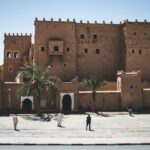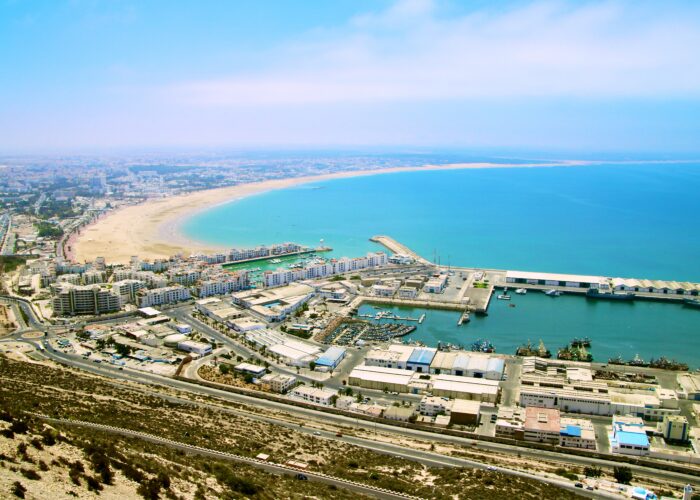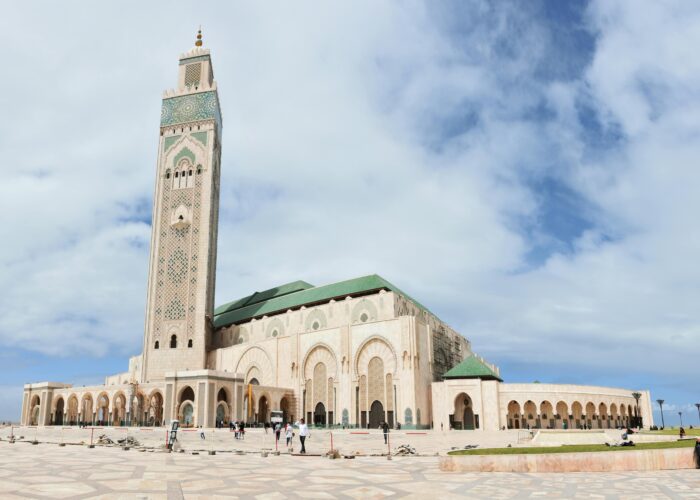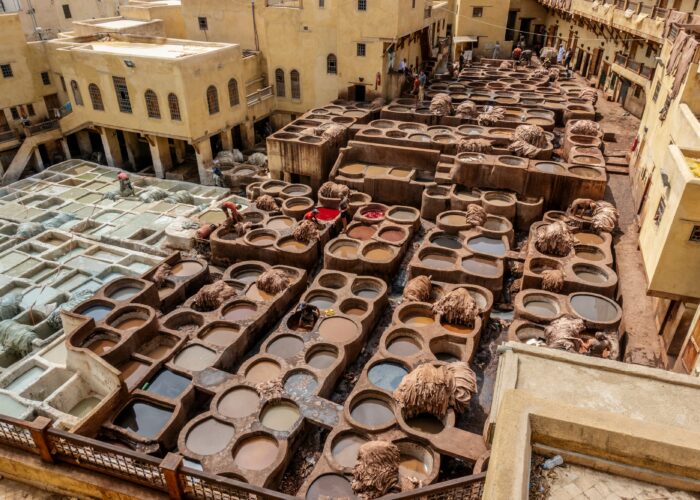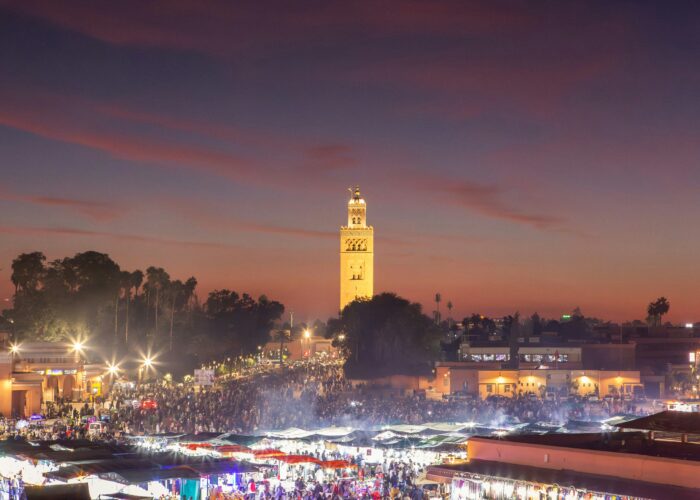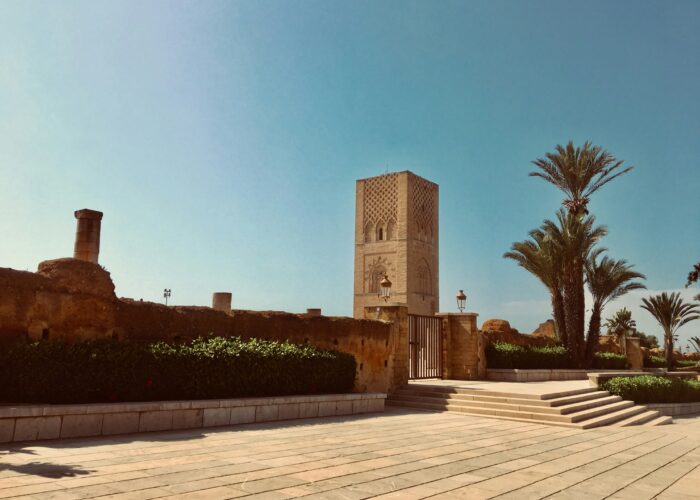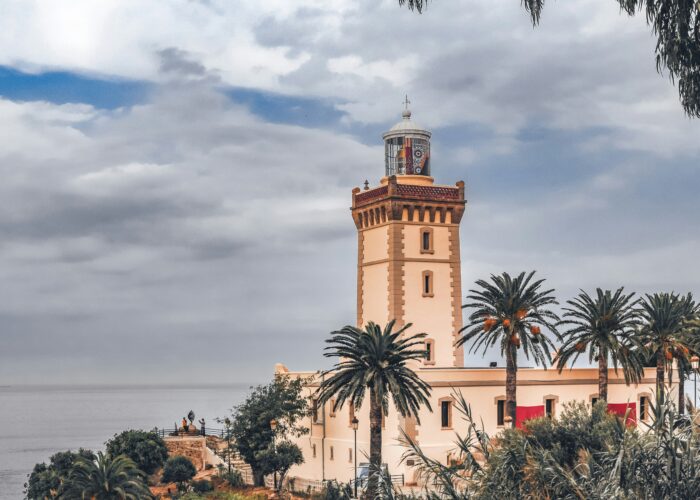Introduction to Moroccan Cuisine
Moroccan cuisine stands as a vibrant tapestry woven together by diverse cultural influences, prominently featuring Berber, Arab, and Mediterranean elements. This culinary art has evolved over centuries, reflecting the rich history and traditions of the Moroccan people. The amalgamation of spices, textures, and ingredients creates dishes that are not merely meals but are, in fact, narratives steeped in the heritage of the region.
The significance of food in Moroccan society extends beyond its sensory appeal; it serves as a vital expression of hospitality and community. Meals are often communal, reflecting the Moroccan ethos of sharing and togetherness. Traditional dishes are typically prepared with considerable care, ensuring that each element contributes to a harmonious blend of flavors. Ingredients such as saffron, cumin, and coriander are staples, each infusing individuality into respective dishes and contributing to the culinary identity of Morocco.
In addition to its rich flavors, Moroccan cuisine offers an array of textures and aromas that captivate the senses. From the hearty tagines simmered with meats and vegetables to the light and fluffy couscous, each dish illustrates the importance of seasonality and locality in Moroccan cooking. The vibrant colors of fresh produce, paired with countless spices, serve to elevate dishes from mere sustenance to works of culinary art.
This intricate relationship between food and culture makes Moroccan cuisine a fascinating subject for exploration. The ten authentic dishes that will be detailed further in this blog post are more than just culinary delights; they are cultural artifacts that evoke stories and traditions from the heart of Morocco. As readers prepare to embark on this culinary adventure, they will discover not only the recipes but also the narratives encapsulated within each serving.
The 10 Must-Try Dishes
Moroccan cuisine is known for its vibrant flavors, aromatic spices, and rich cultural heritage. The following dishes represent the essence of Moroccan gastronomy, showcasing regional variations and culinary traditions passed down through generations.
1. Tagine: This iconic dish, cooked in a conical clay pot, often features meat, vegetables, and an array of spices. Key ingredients include lamb or chicken, olives, and preserved lemons. Tagine is slow-cooked, allowing flavors to meld beautifully.
2. Couscous: Considered the national dish, couscous consists of steamed semolina grains. Traditionally served with meat or vegetable stew, it can be found in numerous variations across different regions, each with unique spices.
3. Harira: A hearty soup typically consumed during Ramadan, harira combines tomatoes, lentils, chickpeas, and spices like coriander and cumin. This dish is often served with dates and is steeped in cultural significance.
4. Pastilla: A dish that combines sweet and savory flavors, pastilla is a pie filled with pigeon (or chicken), almonds, and spices, all encased in crispy phyllo pastry. Its intricate preparation reflects the skill of Moroccan cooks.
5. Mechoui: This whole roasted lamb dish is traditionally cooked in a pit. It’s characterized by its spice rub, which often includes cumin and coriander, giving it a unique flavor that showcases Moroccan grilling techniques.
6. Rfissa: Often served at celebrations or major events, rfissa consists of shredded flatbreads topped with a rich stew of chicken and lentils, seasoned with fenugreek and saffron, representing a comforting home-cooked meal.
7. B’stilla: Similar to pastilla but usually prepared sweeter, it features layers of pastry filled with spiced pigeon or chicken, almonds, and cinnamon, ultimately dusted with powdered sugar.
8. Zaalouk: This popular eggplant and tomato salad is flavored with garlic and cumin, served warm or chilled as a side dish. Its simplicity complements any main course.
9. M’hanncha: Known as the snake pastry, m’hanncha is a sweet dessert made with almond paste encased in coils of thin pastry, often flavored with orange blossom, and served at festive occasions.
10. Kefta: These spiced meatballs, made from ground beef or lamb, are often cooked in a tomato sauce and are frequently served with eggs. Kefta represents the heartiness of Moroccan comfort food.
To truly savor these dishes, explore local markets and renowned restaurants throughout Morocco. Cities like Marrakech and Fes host culinary festivals where you can taste authentic preparations and engage with local chefs. Short recipe videos showcasing these culinary delights can provide additional context and inspiration for readers eager to recreate Moroccan flavors at home.
Cultural and Historical Context
Moroccan cuisine stands as a rich tapestry woven from diverse cultural influences, historical narratives, and regional characteristics. Each dish tells a story that reflects the heritage and traditions of Morocco, revealing its long-standing culinary journey. The era of the Almoravids and Almohads initiated the fusion of Berber, Arab, and Mediterranean culinary practices, resulting in the unique flavors and techniques present in Moroccan dishes today. Traditional cooking methods, such as tagine preparation, are not merely about sustenance; they embody a deep-rooted respect for ancestral traditions and an appreciation for the land’s natural resources.
Over the centuries, the influence of various cultures, including the Spanish, French, and Sub-Saharan African, has played a crucial role in shaping Moroccan gastronomy. This blending has led to signature dishes, such as couscous and pastilla, whose flavors not only tantalize the palate but also honor the cultural exchanges that have occurred throughout Moroccan history. The invited narrations of local cooks and chefs at food markets and traditional kitchen setups provide invaluable insights into these dishes, showcasing the intricate relationship between food and Moroccan identity.
Food in Morocco serves as an essential medium for storytelling, providing a platform for sharing unique experiences and preserving cultural legacies. Every meal shared among families and communities fosters connection, making the act of eating a celebration of heritage. Vendors selling street food and local specialties often engage with customers, recounting the history of each dish, which emphasizes the importance of oral tradition in Moroccan society. As travelers indulge in these authentic flavors, they partake in a collective narrative that transcends generations, reminding us of the enduring spirit of Moroccan culture through its cuisine.
Sustainable Food Tourism in Morocco
Sustainable food tourism in Morocco presents an exceptional opportunity for travelers to immerse themselves in the nation’s rich culinary heritage while promoting ethical practices and supporting local communities. As more travelers seek responsible options, engaging with Moroccan cuisine can play a significant role in fostering sustainability. One effective way to contribute is by visiting women-led cooperatives, which often produce traditional products such as argan oil and herbs. These cooperatives empower local women economically and preserve age-old culinary traditions, allowing visitors to enjoy authentic flavors while supporting gender equality.
In addition to cooperative visits, engaging with local markets enhances the travel experience. Markets serve not only as vibrant centers of commerce but also as social hubs where one can interact with artisans and local vendors. This interaction provides a deeper understanding of Moroccan cuisine while stimulating the local economy. Opting for meals at establishments that prioritize farm-to-table practices further underscores a commitment to sustainability, as they often source ingredients from local farmers and artisans.
Travelers should also consider eco-friendly dining options, which are increasingly available across Morocco. Restaurants adopting sustainable practices may offer organic dishes or use seasonal ingredients that minimize their ecological footprint. Navigating the culinary landscape responsibly entails being mindful of food choices, reducing waste, and supporting venues that align with ethical practices.
To facilitate this journey, downloading the ‘Moroccan Foodie Travel Checklist’ can provide practical tips on navigating local food scenes sustainably. This resource will help ensure that every meal enjoyed contributes to a thriving local economy and fosters an appreciation for Morocco’s culinary diversity. By embracing sustainable food tourism, travelers not only enrich their experiences but also leave a positive impact on the communities they visit.













